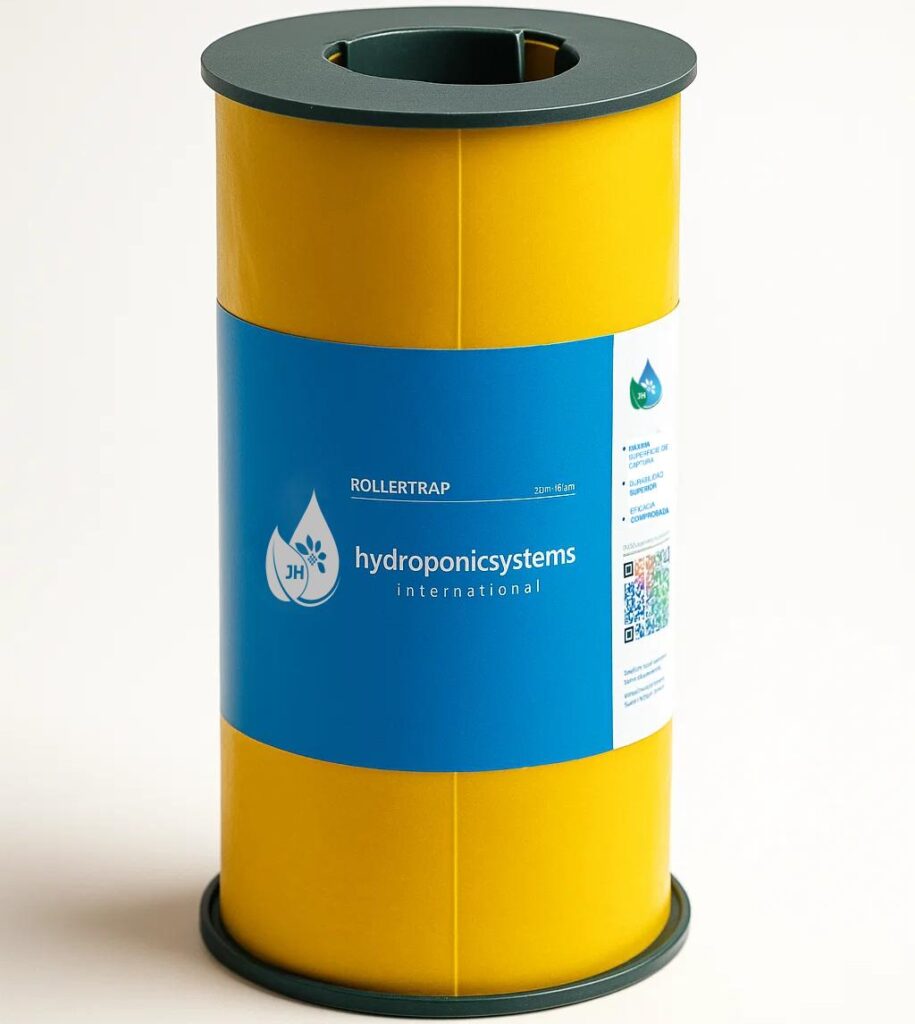The effectiveness of color control in greenhouses depends on both the quality of the materials and the discipline with which they are handled. Below is a detailed technical and practical guide to maximizing the performance of double-hook traps and polypropylene adhesive rolls (models available in thicknesses from 70 µm to 300 µm depending on the application), designed to resist deformation and maintain adhesion even in hot and humid conditions.
Material selection
- Choose rolls made of UV-treated polypropylene: their thermal stability prevents waviness and flatness issues that reduce trapping efficiency.
- Check the thickness: greater thicknesses provide greater rigidity and resistance to handling; select the appropriate thickness based on the campaign length and greenhouse climate conditions.
- Prioritize large adhesive surfaces (e.g., up to 91% active area) to extend the intervals between refills and maximize trapping per unit.
Placement planning and density
- Define a trap map before installation: mark access zones, edges, adjacent greenhouses, and walkways. Traps are strategically placed around perimeters and entry points to detect incursions, and in the canopy to monitor internal populations.
- Adjust density according to crop and risk: short-cycle or high-density crops require a greater number of traps and more frequent checks. Use historical records to adjust densities season by season.
Efficient installation: double hook and deployment tool
- Double-hook traps allow for knot-free and staple-free installation: they can be placed and removed in a single motion, reducing installation time and eliminating potential points of failure during treatments or ventilation.
- When using rolls, employ the dedicated unrolling tool for even unwinding and controlled tension; this prevents wrinkles and uneven adhesive exposure.
- Place each trap at the optimal height for each crop: at foliage level for strawberries and lettuce; between the top and middle third for tomatoes and peppers; and vertically for ornamental plants.
Handling and safety
- Use clean gloves when handling rolls or traps and follow strategic gluing practices to avoid contact with the adhesive. Proper design minimizes glue transfer to hands and tools.
- Keep the hardened end caps on the rolls until ready for use to prevent leaks or contamination of the adhesive during storage and transport.
Maintenance, replacement and records
- Inspect traps regularly (weekly during peak infestations) and record counts by location. A structured record allows you to identify peaks, trends, and critical points.
- Replace traps based on accumulation and effectiveness—not just on a schedule. The high percentage of adhesive surface and the high-quality adhesive allow for longer intervals under normal conditions, but early replacement is recommended when traps become saturated.
- Label each trap with the date and location for comparative analysis and data-driven decision-making.
Storage and end of life
- Store rolls in a dry, cool place away from sunlight. The hardened caps facilitate safe stacking: the glue won’t come out.
- When removing the traps, separate the materials to facilitate recycling: polypropylene is recyclable. Avoid depositing stapled or strung traps, as these hinder material recovery. For this reason, it is best to use double-hook traps without knots or staples.

The disciplined use of double-hook traps and non-deformable polypropylene rolls maximizes early detection, reduces unnecessary interventions, and simplifies logistical operations in the greenhouse. Their robustness and technical design—high-quality adhesive, larger adhesive area, protective caps, and deployment tools—reduce operational effort and improve the reliability of the monitoring system. For growers seeking efficiency and sustainable results, investing in the right materials and practices is a strategic decision that reduces risks and costs throughout the growing season.
For personalized technical advice on trap density and program for your crop, contact our technical team at Hydroponic Systems.




